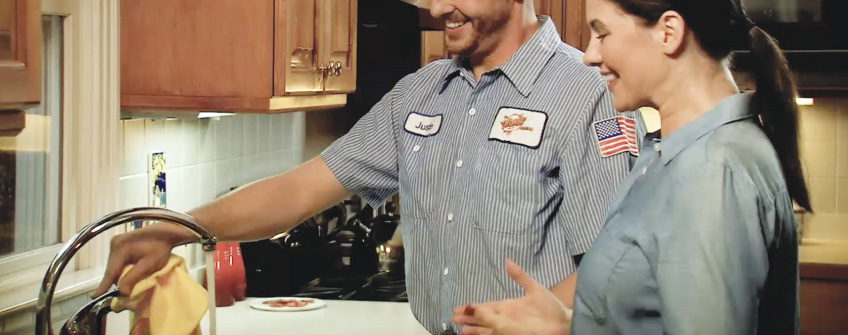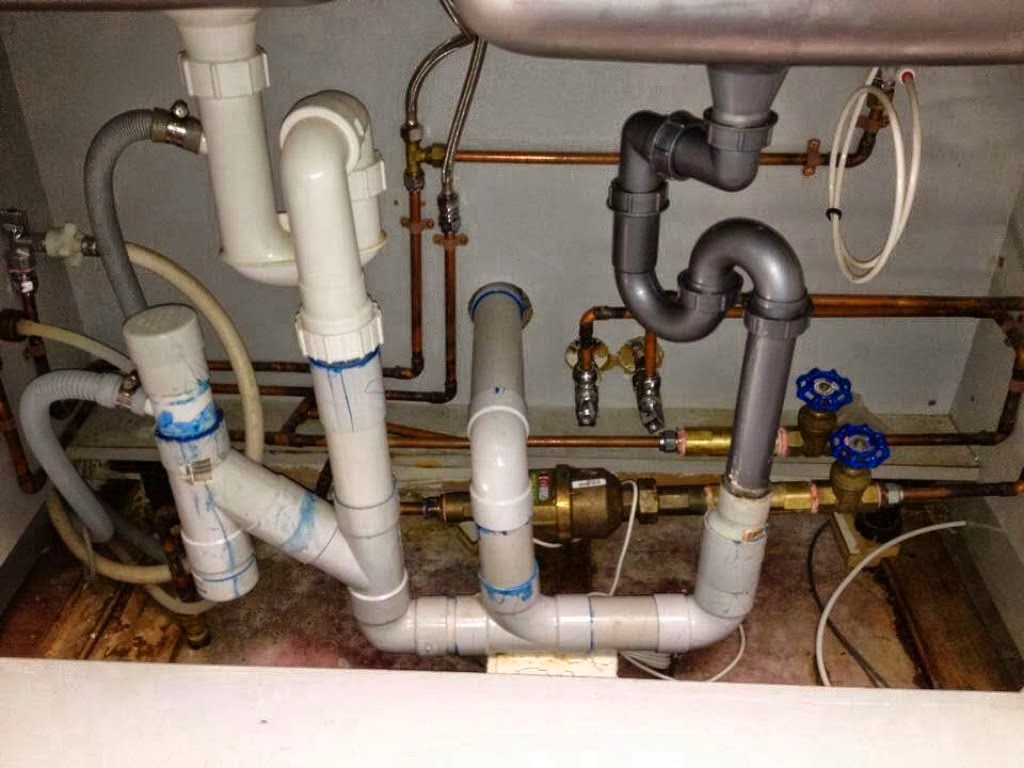Replacing Your Homes Old Pipes?
Pipes do not need to be replaced just because they are old. Even if you have a home that is more than 20 years old, if you aren’t experiencing any plumbing problems and have had routine inspections performed, your pipes are probably okay. A consideration for homeowners of a home built from 1970 to 1990 is that they could have lead or polybutylene pipe material. As mentioned earlier in this piece, lead presents some major health risks, and polybutylene is a weak and brittle material that can break easily. So while the risk isn’t as great, you could also check for any cases of lead piping in your area as a precaution.
How Expensive Is It to Replace Older Pipe Materials?
Replacing old pipes is often a massive undertaking. The cost to replace old piping can vary greatly based on multiple factors, such as:
- Amount of piping that needs replacement
- Difficulty in accessing the piping
- Needing other tradesmen besides a professional plumber
- Heavy equipment needed (below-ground piping or tree and brush removal)
A homeowner should expect to pay more than $1,000 for any significant project. Depending on the aforementioned factors, the price tag could reach $10,000 and up. It’s always worth checking, but pipe repair and other plumbing problems aren’t always covered by a homeowners insurance plan.
What Preventative Measures Can Homeowners Take?
Besides getting an inspection by a professional plumber and doing your own inspections, there are other steps you can take to avoid major plumbing problems that lead to a hefty price tag. These can occur before and after a home is purchased. Some of these include:
Presale Home Inspection
Being preemptive is always smart. Regardless of the home’s age, you should have a thorough home inspection that includes a review of the plumbing system, including water lines, before purchase. If this inspection turns up potential pipe replacements or pipe repair, you may use this information to renegotiate the price or require it to be fixed before buying.
Sewer Drains
One major area of concern is sewer drains. When sewer drains clog, they can cause pipes to burst, especially with older pipes. You can spot several signs to indicate that you may have clogged sewer lines. When you wash dishes or take a shower, do you notice if the water remains standing or drains slowly? If there isn’t any visible obstruction, this might be cause for concern. Other signs to look for include unusual odors and noises when using drains. The water may still be flowing freely, but these could indicate a problem down the line.
Winterize Pipes
If you live in an area that freezes during the winter months, you need to get your pipes winterized. Freezing water expands and can lead to blockages or outright bursts. Winterizing pipes is as simple as wrapping them with heat tape or another material to keep them above freezing.
Dispose of Materials Properly
Part of keeping pipes and drains running smoothly is not putting items through them that have the potential to cause a clog. Some items, such as leftover animal bones from cooking are obvious, but others are less so. These include:
- Rice
- Coffee grounds
- Cooking oil
- Eggshells
- Flour
- Animal fat
- Grains and seeds
- Paint
- Hygiene products
Items like coffee grounds and seeds don’t dissolve in water and can build up in piping. While these items appear to be liquid, fat and oils solidify with time, making them a serious risk. Substances like flour get sticky when wet, and a clog may occur when large amounts are drained at once.
Proper Installation of Appliances
While this might not seem like a major issue, properly installing items like a water heater and dishwasher is beneficial for the pipes involved. Besides preventing leaks, it may also prevent blockages and backflow of water. Taking this step can also prevent more serious issues like gas leaks and fire hazards.
What to Look For in a Repair Service
When scouting for potential repair services, there are several qualities that you should look for. Checking reviews and asking around can help narrow down the field. Some factors to consider include:
Experience in Pipe Repair and Replacement
Due to the complexity of plumbing systems, the more experienced the plumber you hire, the better. A more experienced company is likely to have experience with removing old pipes. This experience can also carry over to the inspection side of piping. They may even have items like heavy digging equipment, which eliminates the need for finding another professional service.
Training and Certifications
While most state and local governments have regulations and licensing for plumbers, you should still review the technicians and personnel before hiring anyone. Many companies list the combined experience of their workers.
Multiple Services Offered
Since piping has many facets to it, a good plumbing company is experienced and capable of handling any of them. Aside from piping repair and removal, you should check that a prospective company offers the following:
- Drain cleaners
- Drain maintenance
- Water heaters
- Sewer lines
- Appliance installation
- Backflow prevention
Are You Ready to Get Serious About Pipes?
Now that you know more about how old piping can contribute to plumbing problems, what are you waiting for? Just because a span of piping is old doesn’t mean it is ineffective. Many factors can determine if the pipes in your home need replacement, including the material type, weather, and general use over its lifetime. Having the right professionals is a must. Having one with experience, the proper certifications, and that offers all the services is essential too. If you’re ready to get started on your next project with old piping, contact us for all your plumbing needs today.

